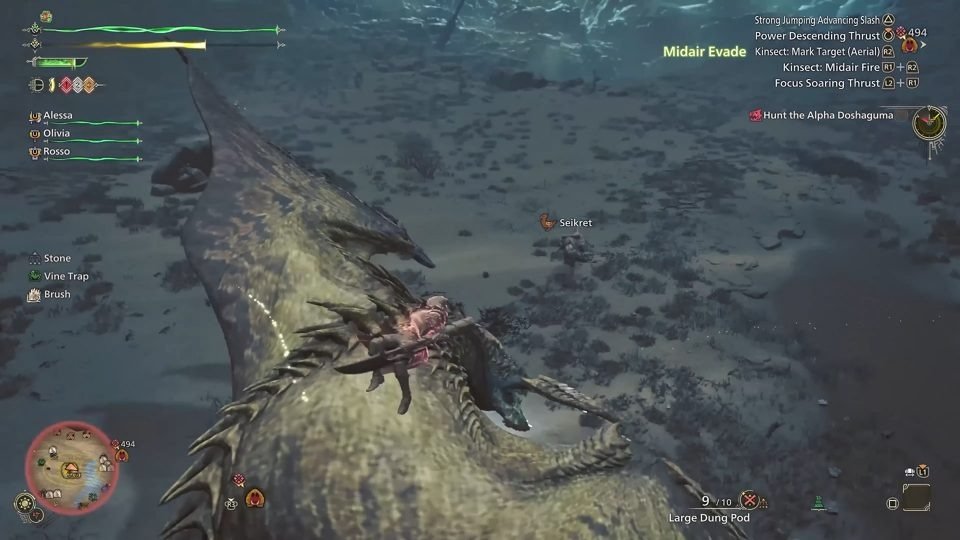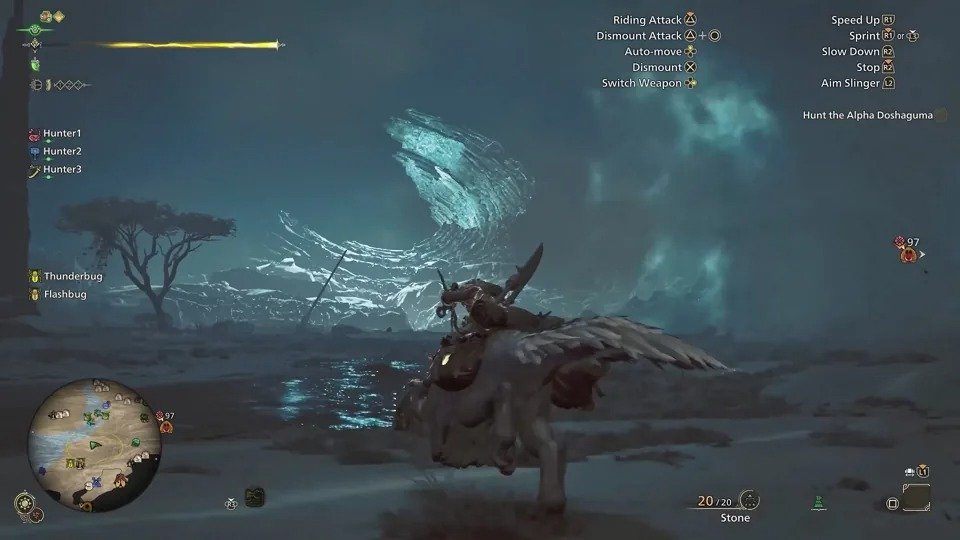"The Axis Unseen" Gameplay Demonstration
691
2024 / 09 / 26
After entering the tutorial of Monster Hunter Wilderness, the first thing that caught my eye was that both the main character and the Palico now have voice acting. This quickly immersed me into the story. However, the second thing I noticed, unfortunately, is that the early demo version has noticeable optimization issues.
Wilderness is a game I’ve been eagerly anticipating. It inherits elements I loved from Monster Hunter World, while also incorporating the high mobility fun of Monster Hunter Rise. In the few missions I played, the two are well balanced, creating a fantastic experience.
Unfortunately, since Wilderness is still in development, its performance was somewhat disappointing, making me feel a bit let down. But if Capcom can resolve these issues before the game’s release next year, Wilderness could very well become the Monster Hunter I’ve been dreaming of.

It’s clear that Wilderness prioritizes solving long-standing issues of the Monster Hunter series. Take the returning mount system as an example: the mount system first appeared in Monster Hunter World: Iceborne, but it could only be used for auto-pathing back then. Later in Rise, it evolved into something you could actually control, allowing you to ride monsters. In Wilderness, the mount system is more like the latter. The default mode is automatic target following, but players can take over control at any time.
The player's mount is a "Heronhawk Dragon," which looks similar to a terror bird. It can run on special paths, glide, and use or gather items while riding, making exploration much more fun and natural, unlike the cumbersome and awkward Wisps collection in Rise.

But the Heronhawk Dragon does more than make travel easier—it can also carry a second weapon for the player. While riding, players can switch weapons. As a loyal user of the Insect Glaive, I wasn’t initially interested in this feature... until I realized I could use ranged weapons like the Ballista while riding.
This completely changed my understanding of the mount system. Now, I can have the Heronhawk Dragon automatically chase down fleeing monsters while I sit back and shoot from afar. When it’s time to fight on foot again, I switch back to the Insect Glaive. It seems we all need to practice using ranged weapons now, but this flexibility adds more variety to the gameplay, which I’m very pleased with.

Regarding weapon changes, I can only talk about the experience of using the Insect Glaive—though the changes surprised me. Most of the adjustments seem to revolve around the new “Focus Mode,” which allows players to more precisely target specific parts and weaknesses of monsters. I found more opportunities to sidestep or make minor adjustments during attacks, and the issue of being stuck after a combo seemed less frequent. Overall, I had better control over the pace of my attacks.
Although the demo wasn’t long enough for me to fully appreciate all the changes, I could feel that while Wilderness doesn’t have the Wirebug system for aerial mobility, it retains the idea from Rise of speeding up combat and reducing tedious elements.

If you’ll indulge me a little longer, I’d like to continue talking about the Insect Glaive, because there are two major changes in Wilderness that completely altered my habits. First, landing a jump slash no longer triggers the vaulting jump, so there’s no more “fan blade,” which really disappointed me. The flashy aerial combat was one of the highlights of the Insect Glaive.
But at least, some convenience improvements somewhat make up for this loss. For example, if you use the special “Focus Weak Point Attack” to hit a monster’s weak spot, not only can you deal massive damage, but you also instantly gather all three essences, fully charging the “Triple Buff.” This significantly speeds up the mid-to-late stages of each hunt. There’s also a useful UI indicator below your reticle that shows which essence you can gather from the targeted part, making the essence gathering mechanic much more user-friendly.
Although the demo time was short, I noticed many similar examples—they don’t diminish the challenge and deliberate pacing unique to the Monster Hunter series, but they do make the combat more fluid and enjoyable.

There’s now a quick option to use the “least wasteful” healing item; you can use the Clutch Claw to grab distant items (even while riding); gathering speeds at resource points have slightly increased; you can finally pick up bombs after placing them; and if you’re playing offline or temporarily without other players after firing an SOS flare, AI hunters will fill in for your hunting party until real players join.
While these changes aren’t revolutionary, they all feel very logical, making one wonder: Why didn’t we have this before?
Of course, the most unavoidable issue with this demo is optimization. I’m willing to give Capcom the benefit of the doubt on this, as they haven’t even announced a specific release date, only saying it will launch in 2025. So, there’s still plenty of time for polishing.

That said, the performance of this demo was sometimes pretty terrible. When there were a lot of things on screen and effects, the frame rate would drop to an almost unplayable level. Our demo group even had several game crashes. I know Wilderness is still in development, and this demo doesn’t reflect the final version’s performance, but since this is the version Capcom provided us to play, I can’t help but worry.
If I were to be optimistic, this could mean the release date will be later than I expected—perhaps in the latter half or end of 2025. If I were to be pessimistic, it could also mean that Capcom may have bitten off more than they can chew.

Part of why I say this is that Wilderness is undeniably ambitious. This time, Capcom seems to want players to spend more time in the wild. The second mission I played had a structure similar to the “Guiding Lands” from Monster Hunter World: Iceborne. After completing a hunt, I wasn’t sent back to the village but could continue exploring or immediately accept new quests, with world events or other dynamic events triggering in real time around me.
The hunter’s rest areas have also become more lively. Unlike the simple camps with just a tent in the past, I saw a large-scale outpost on the map, with several NPCs I could talk to. I didn’t get the chance to delve into this aspect during the demo, but this design could significantly change the experience between hunts.

From what I’ve experienced so far, Monster Hunter Wilderness is pretty much what I hoped for—a legitimate Monster Hunter sequel that incorporates Rise’s accessibility while inheriting World’s large-scale, grand design.
After playing just a few missions, I can’t fully gauge the game’s design direction or how much the structural changes will affect gameplay, but one thing’s for sure—I can’t wait to play more so I can properly dive into it.
